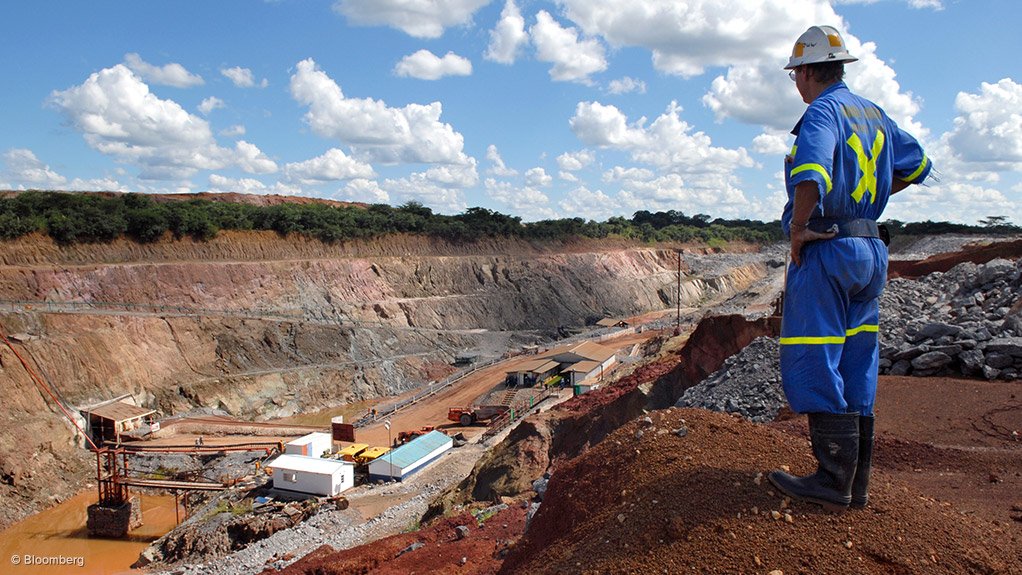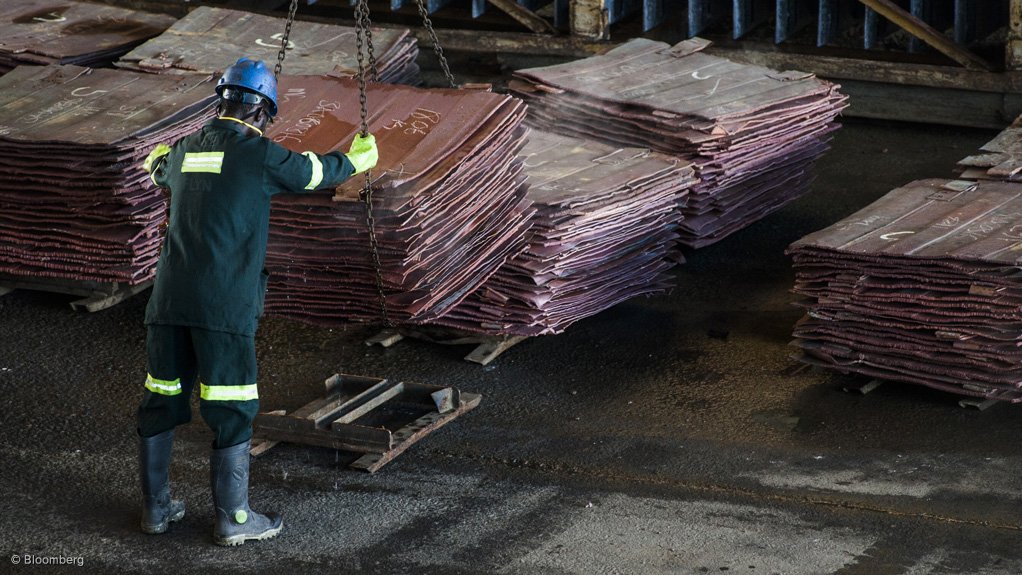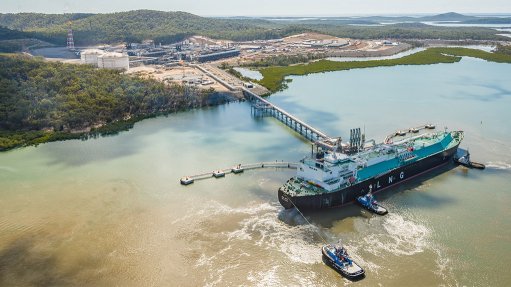Zambian copper industry must be prepared for future upswing



ON THE PRECIPICE Without new investment in improved productivity, Zambia’s mining industry will be unable to cash in on renewed global demand for copper
Photo by Bloomberg
NATIONALIST TENDENCIES Zambia's resource nationalism is reflected in its mandated beneficiation and the restrictions on copper imports
Photo by Bloomberg
While a low metal price environment necessitates that mining companies cut spending and reduce expansion, adopting an overly cautious approach will ensure that companies risk being unprepared when the upswing occurs, says global professional services firm Ernst & Young (EY).
Being unprepared for the upswing is the number one risk facing global mining, according to the ‘Business risks facing mining and metals: 2015–2016’ report – issued yearly by EY. It is also the number one risk to the Zambian copper industry, which currently produces about 715 000 t/y.
The World Bank’s 2015 Zambia economic brief states that “growth in production will begin to slow after 2019. Along with the decline in production, there will be a decline in government revenue, mining industry jobs and foreign exchange”.
Accordingly, if there is no new investment in increased production capacity and improved productivity, then Zambia’s mining industry will be unable to cash in on renewed global demand for copper.
While the consequences may seem a long way off, the EY report makes clear this is a real and present risk. “Given the long lead time to develop new supply, decisions to invest for future growth have to be made now.”
This finding suggests that investors in the Zambian mining industry must have the vision and courage to commit billions of dollars to long-term expansion, secure in the knowledge that it will generate a decent return.
It also suggests that the Zambian government must have the vision and courage to facilitate this investment by creating an investor-friendly environment in terms of a stable and predictable policy framework, an internationally competitive tax regime and simplified, more responsive business regulation.
Investors have become increasingly risk-averse and mining now competes for investor capital with more attractive business sectors, such as the digital economy. The EY report identifies access to capital as a major risk, calling it “a survival issue” for the global mining industry.
Another major risk facing the copper mining industry is access to energy. “Mining is an energy-intensive activity, with the cost of energy representing up to 40% of a company’s total cost base, making it a keenly managed component of any operation,” the report says.
Securing cost-effective and reliable energy becomes even more critical as mining companies expand operations to remote areas with underdeveloped energy infrastructure. Underinvestment in electricity generation and rising domestic demand for energy have caused power shortages in many countries – including South Africa, Indonesia and Brazil.
The ability to provide adequate energy for mining is particularly vital to Zambia, as there is not even enough power for existing mines. Zambian operations continue to face power restrictions and cannot access all their contractual power allocation. Further, if companies require more power, they have to buy expensive top-up power on the open market.
Zambia’s current power constraints mean that, even if there was the desired massive wave of new mining investment in the country, new or expanded mines would stand idle for lack of electricity.
However, the report notes that there are several power generation projects planned, under construction, or nearing completion in Zambia and the first of these is scheduled to come on stream within the next three years.
Resource nationalism has also been identified in the EY report as a possible hurdle. This is broadly defined as the tendency by people and governments to assert control over the natural resources located on their territory. This is typically reflected in high taxes on mining companies, mandated beneficiation, as well as restrictions on imports and foreign workers.
The report says resource nationalism continues and that taxes and royalties are still being increased around the world – but adds that it is “not with the vigour of previous years”. Since 2014, countries have been improving their investment environment to encourage capital flows, a trend the report describes as positive.
“In more extreme cases, where disinvestment was a threat, countries have reversed their position on resource nationalism action, which is a sign that a turning point has been reached.” The report cites Australia and Zambia as examples of countries that have repealed punitive royalty tax rates.
Commenting on the EY report to the Mining for Zambia website, Zambia Chamber of Mines president Nathan Chishimba cites the report as useful, as it shows Zambia’s challenges are not unique to the country and exist in a global context. “That said, the various risks outlined are proportionately more important for a single-commodity economy like Zambia’s, than larger, more diversified economies.”
He adds that the report also shows how everything is connected from a policy perspective in the quest for higher revenues from copper – “higher revenues imply higher copper production; higher copper production implies more investment; more investment implies an investor-friendly environment and an investor-friendly environment implies a reliable supply of energy, without which no new production can take place”.
This is why a strategic, Chishimba says, long-term vision is so critical – both by the mining industry, which invests, and government, which establishes the policy framework within which investment takes place.
Comments
Press Office
Announcements
What's On
Subscribe to improve your user experience...
Option 1 (equivalent of R125 a month):
Receive a weekly copy of Creamer Media's Engineering News & Mining Weekly magazine
(print copy for those in South Africa and e-magazine for those outside of South Africa)
Receive daily email newsletters
Access to full search results
Access archive of magazine back copies
Access to Projects in Progress
Access to ONE Research Report of your choice in PDF format
Option 2 (equivalent of R375 a month):
All benefits from Option 1
PLUS
Access to Creamer Media's Research Channel Africa for ALL Research Reports, in PDF format, on various industrial and mining sectors
including Electricity; Water; Energy Transition; Hydrogen; Roads, Rail and Ports; Coal; Gold; Platinum; Battery Metals; etc.
Already a subscriber?
Forgotten your password?
Receive weekly copy of Creamer Media's Engineering News & Mining Weekly magazine (print copy for those in South Africa and e-magazine for those outside of South Africa)
➕
Recieve daily email newsletters
➕
Access to full search results
➕
Access archive of magazine back copies
➕
Access to Projects in Progress
➕
Access to ONE Research Report of your choice in PDF format
RESEARCH CHANNEL AFRICA
R4500 (equivalent of R375 a month)
SUBSCRIBEAll benefits from Option 1
➕
Access to Creamer Media's Research Channel Africa for ALL Research Reports on various industrial and mining sectors, in PDF format, including on:
Electricity
➕
Water
➕
Energy Transition
➕
Hydrogen
➕
Roads, Rail and Ports
➕
Coal
➕
Gold
➕
Platinum
➕
Battery Metals
➕
etc.
Receive all benefits from Option 1 or Option 2 delivered to numerous people at your company
➕
Multiple User names and Passwords for simultaneous log-ins
➕
Intranet integration access to all in your organisation



















